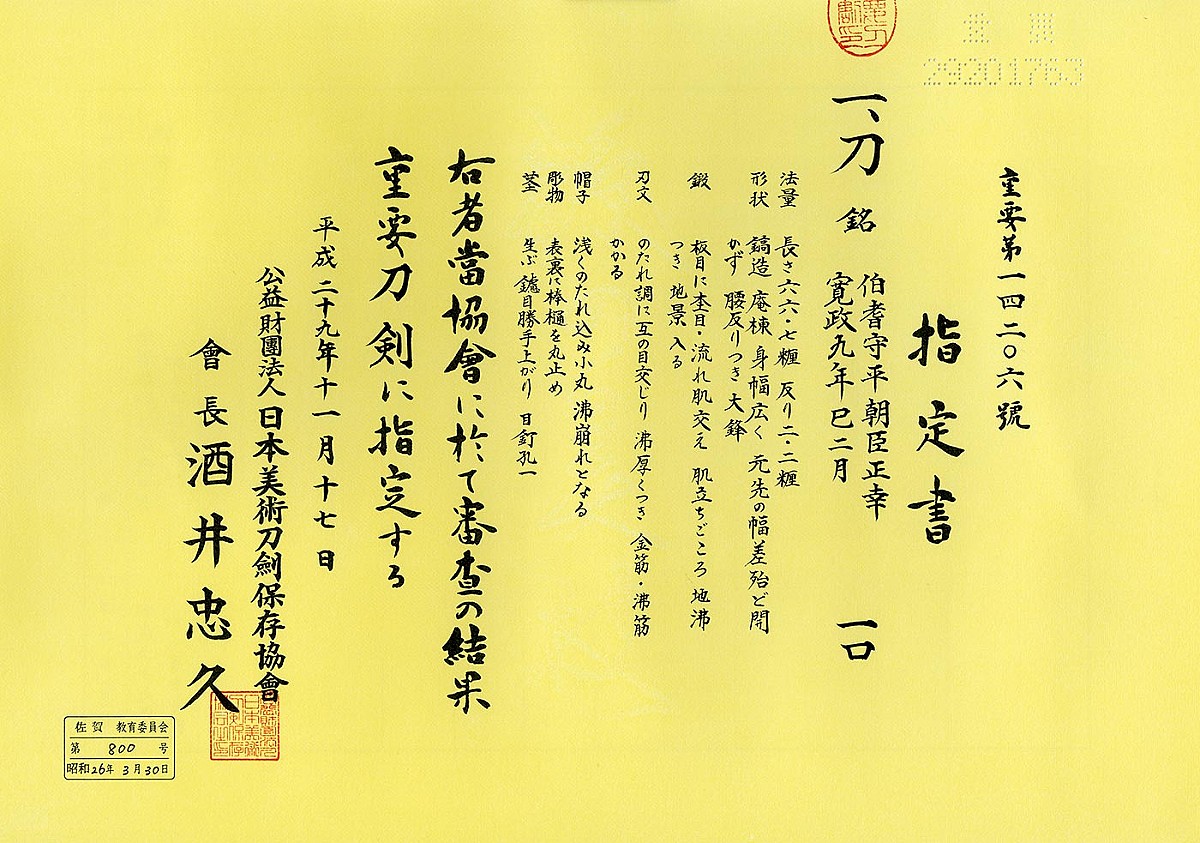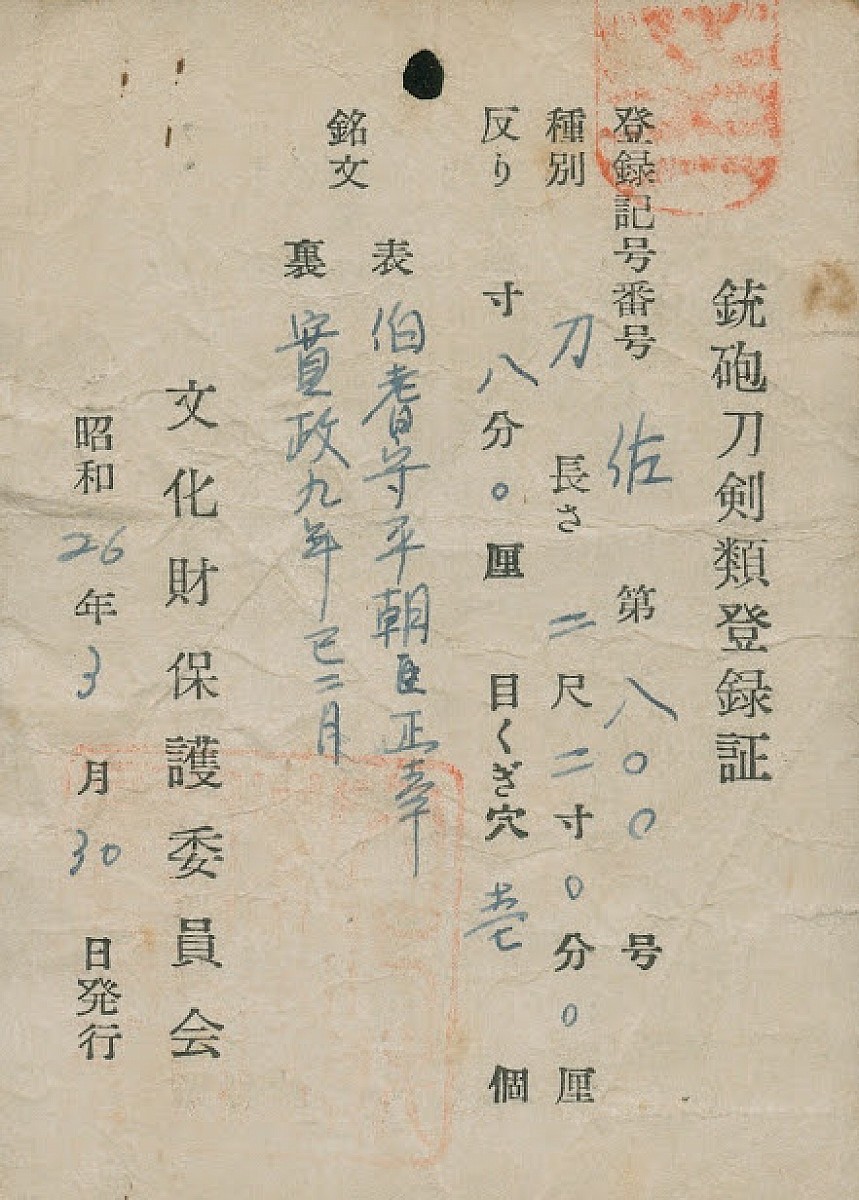Extraordinary wide sword from an American Collector
Jūyō Tōken Hoki Kami Taira Ason Masayuki (Masayoshi)
(translation)
Designated as jūyō tōken at the 63th jūyō-shinsa held on November 17th, 2017
Signature: Hoki Kami Taira Ason Masayuki
9th Year of Kansei, 2nd Month, Year of the Snake.
Measurements: nagasa 66.7 cm, sori 2.2 cm, motohaba 3.6 cm, sakihaba 2.75, kissaki-nagasa 5.7 cm, nakago-nagasa 19.9 cm, nakago-sori 0.1 cm.
Shape: shinogi-zukuri, iori-mune, wide mihaba that is wider than average. Almost no difference in the width from the machi to the tip point; thick kasane, deep sori (koshizori), and the mune is wide.
Kitae: itame-hada with mokume and nagare-hada. The pattern (hada) is rather distinct. Ji-nie is wide, with many chikei.
Hamon: notare with frequent gunome, and with the pointed marks togari here and there. There are many ashi and yo. The nioi is deep, nie is wide, with distinct rough nie, marked by many golden lines (kinsuji) and nie-suji.
Bōshi: Slightly wavy, komaru-type at the point, doubly pattern, and crumbled nie.
Horimono: One straight bō-hi becoming rounded on each end on both sides of the blade.
Nakago: Ubu. Saki-ire is mountain-shaped; yasurime is katte-agari, with one mekugi-ana; on the front side, the rather large engraving can be found, and on the back side the year is engraved in slightly upper part.
Explanation: Hoki no Kami Masayuki was born in Kyōhō 18 as a son of the 2nd Generation Ijichi Masayoshi. He inherited the name of Masayoshi as the 3rd Generation. In Kansei 1, he was awarded the title «Hoki no Kami» at the same time as Oku Motohira was awarded his «Yamato no Kami» title. He then changed his name into Masayuki and passed on the name of Masayoshi to his own son. He passed away at the age of 86 in Bunsei 1. His technique was superior to his father’s and as such was became well known. Among the new sword masters of Satsuma, Masayuki and Oku Yamato-no-Kami Motohira were both the best.
Masayuki’s swords are characterized by the broad width, long-sized, thick, wider mune, and in general robustly made. The pattern on the blade is notare (wavy) with gunome rather togari (pointed mark). The nioi is deep, with rather rough nie, marked by golden lines (kinsuji) and sand- like flows (sunanagashi); Sōshū-Den type, especially Shizu-type (Shizu Saburō Kaneuji 志津三郎兼 氏) was the one Masayuki was good at.
On this sword, shows itame with mokume and nagare-hada, rather distinct hada, with the wide ji- nie, with many chikei; hamon is in the style of notare with many gunome and pointed togari-ba here and there; with many ashi and yo, nioi is deep and nie is wide; nie is rather rough and distinct, with many kinsuji and nie-suji; jiba shows the typical and remarkable characteristics of a sword by Hoki no Kami Masayuki. He was a smith who was good at making a sword that is wide and with longer forefront, and above all this sword is remarkably dynamic in appearance; hamon shows a nie wider than usual and there are many patterns on the blade; all of these marks this sword brilliant.



